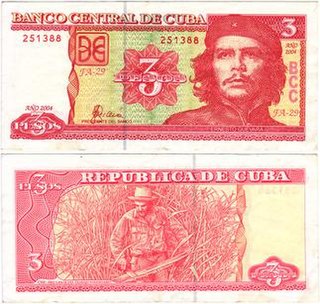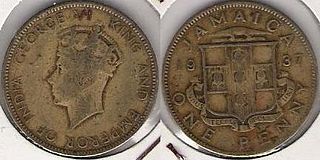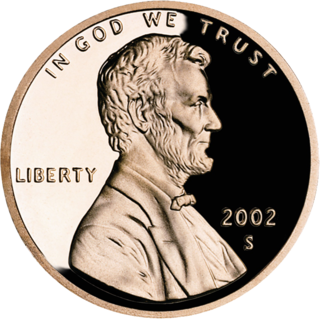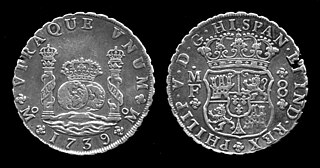This article needs additional citations for verification .(July 2007) (Learn how and when to remove this template message) |
Scotch and Soda is a magic effect involving a copper coin and a silver coin which appear to transpose in the spectator's hands. The effect relies on simple gimmick and tricks can be performed with it that are self-working, requiring almost no skill. The trick is named after the cocktail Scotch and soda; the copper coin represents the "Scotch" and the silver coin represents the "soda".

Magic, along with its subgenres of, and sometimes referred to as illusion, stage magic or close up magic is a performing art in which audiences are entertained by staged tricks or illusions of seemingly impossible feats using natural means. It is to be distinguished from paranormal magic which are effects claimed to be created through supernatural means. It is one of the oldest performing arts in the world.

Copper is a chemical element with symbol Cu and atomic number 29. It is a soft, malleable, and ductile metal with very high thermal and electrical conductivity. A freshly exposed surface of pure copper has a pinkish-orange color. Copper is used as a conductor of heat and electricity, as a building material, and as a constituent of various metal alloys, such as sterling silver used in jewelry, cupronickel used to make marine hardware and coins, and constantan used in strain gauges and thermocouples for temperature measurement.
A coin is a small, flat, (usually) round piece of metal or plastic used primarily as a medium of exchange or legal tender. They are standardized in weight, and produced in large quantities at a mint in order to facilitate trade. They are most often issued by a government.
The effect is usually performed as follows: The magician displays two coins of almost equal size, one copper and one silver. The silver coin is most often a U.S. half dollar and the copper coin is usually either an English penny or a Mexican centavo. The magician stacks the coins and places them into the spectator's hand. He then asks her to place her hands behind her back and put one coin in each hand, remarking that the silver coin is slightly larger than the copper coin, making them easy to tell apart. The magician asks to see the silver coin which the spectator produces. When the spectator opens her other hand, the copper coin has become a quarter. The copper coin can then be made to appear wherever the magician desires, such as in the spectator's pocket or under an object across the room.

Silver is a chemical element with symbol Ag and atomic number 47. A soft, white, lustrous transition metal, it exhibits the highest electrical conductivity, thermal conductivity, and reflectivity of any metal. The metal is found in the Earth's crust in the pure, free elemental form, as an alloy with gold and other metals, and in minerals such as argentite and chlorargyrite. Most silver is produced as a byproduct of copper, gold, lead, and zinc refining.

The United States of America (USA), commonly known as the United States or America, is a country composed of 50 states, a federal district, five major self-governing territories, and various possessions. At 3.8 million square miles, the United States is the world's third or fourth largest country by total area and is slightly smaller than the entire continent of Europe's 3.9 million square miles. With a population of over 327 million people, the U.S. is the third most populous country. The capital is Washington, D.C., and the largest city by population is New York City. Forty-eight states and the capital's federal district are contiguous in North America between Canada and Mexico. The State of Alaska is in the northwest corner of North America, bordered by Canada to the east and across the Bering Strait from Russia to the west. The State of Hawaii is an archipelago in the mid-Pacific Ocean. The U.S. territories are scattered about the Pacific Ocean and the Caribbean Sea, stretching across nine official time zones. The extremely diverse geography, climate, and wildlife of the United States make it one of the world's 17 megadiverse countries.

England is a country that is part of the United Kingdom. It shares land borders with Wales to the west and Scotland to the north-northwest. The Irish Sea lies west of England and the Celtic Sea lies to the southwest. England is separated from continental Europe by the North Sea to the east and the English Channel to the south. The country covers five-eighths of the island of Great Britain, which lies in the North Atlantic, and includes over 100 smaller islands, such as the Isles of Scilly and the Isle of Wight.
Scotch and Soda is a popular trick that can be purchased at magic stores. [1] [2] A number of books exclusively on the subject describe different effects that can be achieved with the Scotch and Soda gimmick. Gin and tonic is a version of the trick using a dime and a penny. Another more recent version is Captain & Coke 2.0 as released by the Blue Crown, it uses a US quarter and a US penny. [3]
The modern version that uses a 20 Centavo and a Kennedy half is often attributed to Richard Himber. In the early 1900s, America's oldest magic company, Martinka made a version that utilized a Barber half dollar and a large cent.
Martinka & Company is America's longest running magic company. Throughout the years the company has acquired and combined with over 30 other magic firms including Flosso-Hornmann, and Milton Chase, and its roots date back to the early 19th century.

Charles Edward Barber was the sixth Chief Engraver of the United States Mint from 1879 until his death in 1917. He had a long and fruitful career in coinage, designing most of the coins produced at the mint during his time as Chief Engraver. He did full coin designs, and he designed about 30 medals in his lifetime. The Barber coinage were named after him. In addition, Barber designed a number of commemorative coins, some in partnership with Assistant Engraver George T. Morgan. For the popular Colombian half dollar, and the Panama-Pacific half dollar and quarter eagle, Barber designed the obverse and Morgan the reverse. Barber also designed the 1883 coins for the Kingdom of Hawaii, and also Cuban coinage of 1915. Barber's design on the Cuba 5 centavo coin remained in use until 1961.
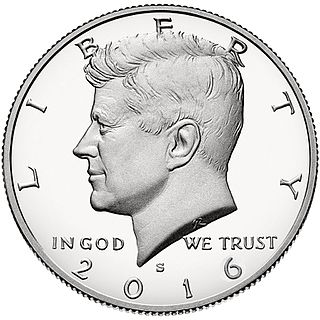
The half dollar, sometimes referred to as the half for short, is a United States coin worth 50 cents, one-half of a dollar, and is the largest United States circulating coin currently produced in both size and weight, being 1.205 inches (30.61 mm) in diameter and .085 inches (2.15 mm) in thickness, and is twice the weight of the quarter. The current half dollar, the Kennedy half dollar, depicts the profile of President John F. Kennedy on the obverse and the Seal of the President of the United States on the reverse, but the design has undergone a number of changes throughout its history.


